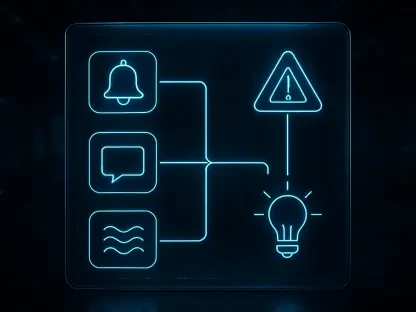Understanding and effectively implementing project management methodologies is crucial for ensuring that projects are completed on time, within scope, and to the quality expected by stakeholders. With a variety of methodologies available, selecting the right one for your project needs can make a significant difference in your success rate. This article delves into various project management methodologies, their applicable use-cases, advantages, and potential drawbacks to help project managers make informed decisions.
Diverse Methodologies for Different Needs
Understanding the Importance of Flexibility and Adaptability
Project environments in 2024 often require methodologies that support adaptability and continuous improvement. Agile and its derivatives, such as Scrum and Kanban, serve these needs by promoting iterative progress and allowing for frequent reassessment of goals and tasks. These methodologies favor flexible planning, quick pivots, and ongoing stakeholder engagement, which can be beneficial in fast-paced or highly innovative sectors. The emphasis on iterative cycles ensures that projects can adapt to new information or changes in requirements, making Agile particularly valuable in rapidly evolving industries like tech, where requirements often shift mid-project.On the other hand, more traditional methodologies like Waterfall or Critical Path Method provide a linear approach better suited for projects with clearly defined requirements and minimal scope changes. This structured planning allows for a more predictable progression but comes with limitations in flexibility and adaptability, making it less suitable for dynamic project environments. Specifically, Waterfall’s sequential phases from conception to completion can be a double-edged sword, offering clarity and structure but at the cost of reduced flexibility to respond to unforeseen challenges. Each methodology offers distinct advantages and can be optimal based on the project’s nature and scope, highlighting the necessity for careful selection based on specific project needs.
Eleven Major Project Management Methodologies
Waterfall: The Classic Approach
Waterfall is one of the oldest and most traditional project management methodologies, involving a linear progression where each phase must be completed before the next begins. This approach provides clear structure and easy project tracking, making it particularly effective in projects with well-defined requirements and deliverables. The Waterfall methodology delineates distinct phases like conception, initiation, analysis, design, construction, testing, and maintenance, which allows for a streamlined, predictable workflow. This linearity is advantageous for projects such as software development, civil engineering, and certain marketing campaigns where the end goals and processes are clear from the outset.However, Waterfall’s rigidity can be a downside, especially in fast-changing project environments. Any modifications to the plan require revisiting earlier phases, which can result in delays and increased costs. For instance, if a fault is identified during the testing phase, it often necessitates a rollback to the design phase, disrupting the entire workflow. Despite these challenges, Waterfall remains a popular choice due to its simplicity and predictability. It is often preferred in government projects, construction, and other sectors where regulatory compliance and documentation are prioritized over flexibility. Its methodical nature ensures thorough documentation and stringent adherence to initial plans, ensuring the project’s meticulous tracking from start to finish.
Agile: Embracing Change with Iterative Progress
Agile methodology focuses on iterative development, adaptability, and continuous feedback, making it ideal for projects with rapidly changing requirements. Agile promotes collaboration and flexibility, enabling teams to respond promptly to feedback and new information. This methodology is widely used in software and product development, where ongoing innovation is critical. In Agile, projects are broken into small, manageable units known as sprints, usually lasting two to four weeks. Each sprint aims to deliver a functional product increment, facilitating regular feedback and adjustment, thus ensuring that the project evolves in alignment with client needs.Despite its advantages, Agile can be less predictable and might suffer from vague planning in its early stages. Also, the potential for frequent changes can lead to cost inefficiencies. Agile’s dynamic nature often requires a cultural shift within the team, promoting values such as face-to-face communication and customer collaboration over contract negotiation. This can be challenging in organizations where traditional hierarchical structures and detailed upfront planning prevail. Nonetheless, Agile remains a favored approach for projects that prioritize speed, responsiveness, and frequent deliverable updates. Its principles of adaptive planning and early delivery empower teams to manage projects with greater efficiency and client satisfaction, particularly in environments where requirements are not fully known until later in the project lifecycle.
Scrum: Structuring Agile with Sprints
Scrum, a subset of Agile, uses short work periods called sprints to break tasks into manageable pieces, ensuring constant progress and regular deliverable updates. Daily scrums or stand-up meetings help maintain communication and track progress, often involving roles like Scrum Master and Product Owner to guide the process. This methodology is highly effective in software development, logistics, and even healthcare, providing a structured yet flexible approach. Each sprint in Scrum is time-boxed, aiming to deliver a potentially shippable product increment at the end, allowing for continuous feedback and adaptation, thus enhancing productivity and alignment with market demands.One of the main challenges of Scrum is its dependency on team commitment and the effectiveness of daily meetings. Additionally, Scrum may not be the best fit for larger teams due to scalability issues. The daily stand-up meetings, while crucial for maintaining transparency and accountability, can become cumbersome and repetitive if not managed effectively. Despite these potential drawbacks, its efficiency and clarity make Scrum a widely adopted methodology. It fosters a collaborative environment where team members can self-organize around objectives, enhancing adaptability and resilience. Through regular review and retrospective meetings, Scrum promotes continuous improvement, ensuring that teams can learn and evolve from each sprint cycle’s outcomes.
Kanban: Visualizing Workflow for Improved Efficiency
Kanban uses a card-based visual system to manage tasks through defined stages, enhancing workflow visibility and efficiency. This methodology is simple and adaptable, making it suitable for a wide range of industries, including production, creative work, and human resources. Kanban’s visual approach helps teams identify bottlenecks and improve process flow by displaying tasks on a board with various columns representing different stages of the work cycle. This visual representation allows teams to instantly see the current state of tasks, facilitating better prioritization and resource allocation.However, Kanban may struggle with dynamic projects with rapidly changing priorities, as it lacks timed phases and requires regular updates. The absence of defined iterations can lead to issues with monitoring progress and deadlines, making it essential for teams to establish clear policies for task prioritization and completion. Despite these challenges, Kanban’s emphasis on continuous delivery and waste reduction makes it a valuable tool for many project managers. Its ability to visualize the entire work process helps teams maintain focus on tasks at hand and improve efficiency. By limiting work in progress (WIP) and fostering a pull-based approach, Kanban ensures that tasks are completed before new ones are started, thus minimizing overburden and enhancing throughput.
Scrumban: Combining the Best of Scrum and Kanban
Scrumban merges Scrum’s structured sprints and daily stand-ups with Kanban’s visual workflow and flexibility. This hybrid approach allows teams to manage tasks more independently while maintaining some level of structured progress tracking. It’s particularly useful for projects that need both the rigidity of Scrum and the adaptability of Kanban, such as marketing campaigns and digital agencies’ tasks. Scrumban leverages Scrum’s iterative framework to deliver work in short cycles while employing Kanban’s visualization techniques to streamline the workflow and enhance productivity.While promising, Scrumban can become cumbersome without regular meetings, and its lack of velocity tracking may hinder performance measurement. The blend of methodologies requires a disciplined approach to balance structure and flexibility. In scenarios where daily scrums are overlooked, or WIP limits are not enforced, the methodology may lose its effectiveness. Still, for suitable projects, Scrumban offers a balanced framework that enhances productivity. By fostering an environment where team members can pull tasks based on their capacity, it ensures a steady flow of work and better resource utilization. This hybrid method also supports continuous improvement through regular retrospectives, enabling teams to refine their processes and adapt to changing project demands.
Methodologies Focused on Efficiency and Waste Reduction
Lean: Maximizing Value by Eliminating Waste
Effectively understanding and implementing project management methodologies is vital for ensuring projects are finished on time, within scope, and meet stakeholders’ quality expectations. With a wide range of methodologies available, choosing the right one for your specific project is key to enhancing success rates. This piece explores various project management methodologies, detailing their applicable scenarios, advantages, and potential limitations.Different projects often demand different approaches. For instance, Agile is suitable for projects requiring flexibility and iterative progress, while Waterfall is more suited for projects with well-defined stages and clear requirements from the outset. Scrum, another popular methodology, emphasizes teamwork and time-boxed tasks, making it ideal for agile environments. Meanwhile, Lean focuses on eliminating waste and maximizing value, making it perfect for efficiency-driven projects. Each methodology carries its unique strengths but also comes with potential drawbacks that must be considered.Project managers must carefully evaluate their project’s specific requirements, timeline, and resource constraints to choose the most fitting approach. By doing so, they can better navigate challenges and successfully deliver outcomes that exceed stakeholder expectations. This article aims to provide project managers with the necessary insights to make informed decisions, ultimately improving their project execution and overall success rate.









